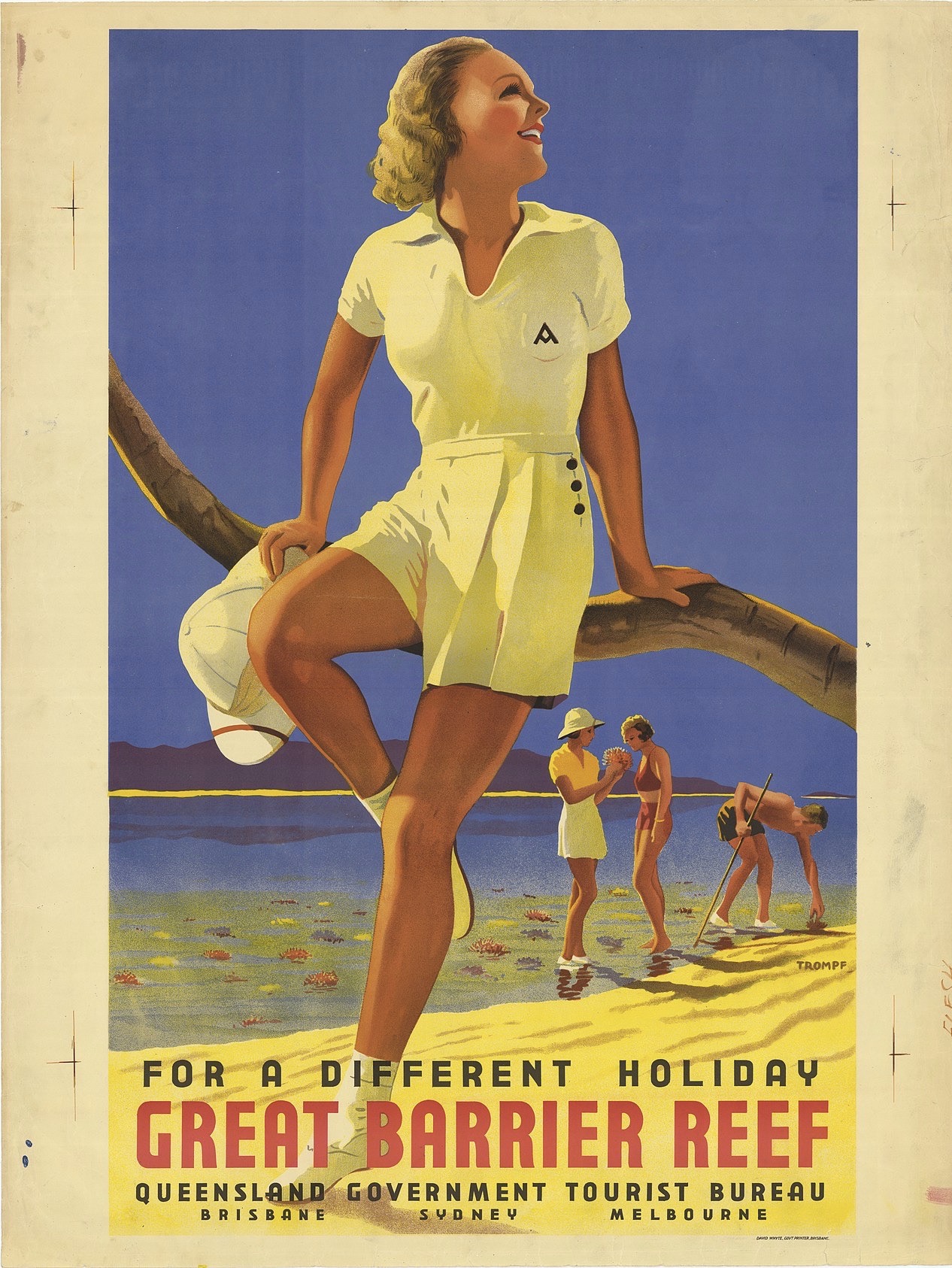MARIANI’S
Virtual
Gourmet
June
27, 2021
NEWSLETTER
IN THIS ISSUE
MYSTIC, CONNECTICUT
By John Mariani
NEW YORK CORNER
MARIO'S
By John Mariani
CAPONE'S GOLD
CHAPTER 13
By John Mariani
NOTES FROM THE WINE CELLAR
CECCHI WINES OF TUSCANY:
AN INTERVIEW WITH ANDREA CECCHI
By John Mariani
❖❖❖
 On
this week's episode of my WVOX Radio Show
"Almost Golden," on Wed. June 30 at
11AM EDT,I will be interviewing TV Host
Bill
On
this week's episode of my WVOX Radio Show
"Almost Golden," on Wed. June 30 at
11AM EDT,I will be interviewing TV Host
Bill  Boggs to talk
about his new book, Spike the Wonder Dog.
Go to: WVOX.com.
The episode will also be archived at: almostgolden.
Boggs to talk
about his new book, Spike the Wonder Dog.
Go to: WVOX.com.
The episode will also be archived at: almostgolden.By John Mariani
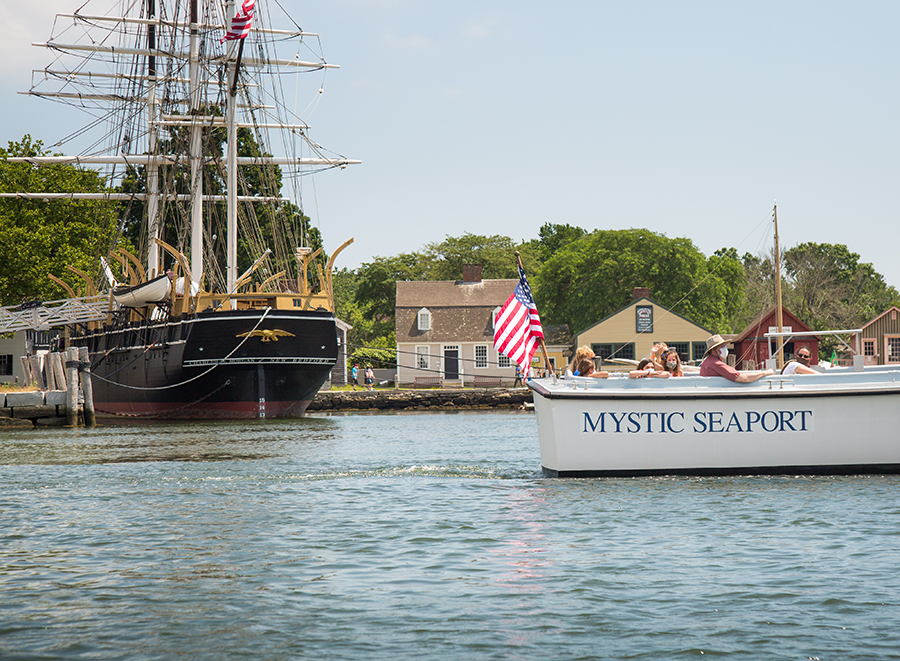
You might
have a passing mystical tremor while leaning
over Mystic old iron bridge on Main Street and
gazing out over the placid harbor while the
stars twinkle and the silver half-moon glows,
but the town’s name has nothing mystical about
it. It comes, like so much else in Connecticut,
including “Connecticut,”
from a Pequod Indian name, missi-tuck,
referring to a large body of water driven by
waves and wind. Which is an apt description of
this beautiful seaside New England town that
lies two-and-a-half hours from New York City,
less than two from Boston, an hour from both
Providence and New Haven. Unless, of course,
you’re headed there Friday afternoon this
summer, when the traffic along I-95 can be
fearsome.
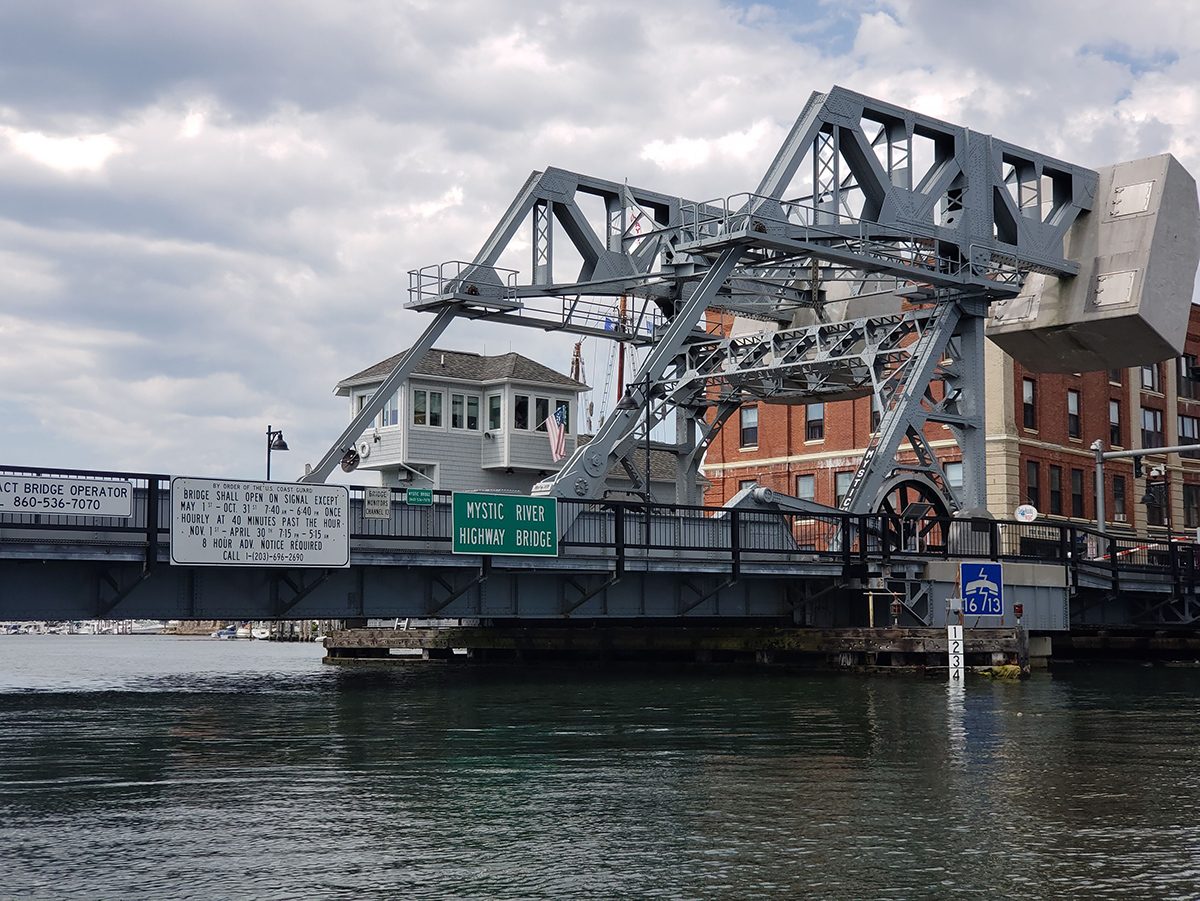 Which, in its own way, is a positive sign
of a rebounding of tourism, and on weekends Mystic
is jammed with people who come to stroll the
downtown streets and visit the extraordinary
Mystic Seaport Museum. Like most other tourist
destinations in New England—Cape Cod, Newport,
Nantucket—Mystic’s Main Street and its tributaries
are lined with the usual fudge and ice cream
shops, the inevitable Black Dog clothing store,
jewelry and tchotchke emporiums, but there are
some unique places, too, including a first-rate
Army & Navy store and Mystic Knotwork, which
sells hand-tied nautical knot bracelets, coasters,
ornaments, door mats, wreaths and more. (There are
40 more shops just north of town called Olde
Mistick Village mall, and the gargantuan and
grotesque Foxwoods Resort & Casino north on
I-95 has a dreary outlet conglomeration.)
Which, in its own way, is a positive sign
of a rebounding of tourism, and on weekends Mystic
is jammed with people who come to stroll the
downtown streets and visit the extraordinary
Mystic Seaport Museum. Like most other tourist
destinations in New England—Cape Cod, Newport,
Nantucket—Mystic’s Main Street and its tributaries
are lined with the usual fudge and ice cream
shops, the inevitable Black Dog clothing store,
jewelry and tchotchke emporiums, but there are
some unique places, too, including a first-rate
Army & Navy store and Mystic Knotwork, which
sells hand-tied nautical knot bracelets, coasters,
ornaments, door mats, wreaths and more. (There are
40 more shops just north of town called Olde
Mistick Village mall, and the gargantuan and
grotesque Foxwoods Resort & Casino north on
I-95 has a dreary outlet conglomeration.)
To see all of downtown Mystic won’t take
you more than a couple of hours of
easy walking back and forth across that historic
Bascule Bridge (left), built in 1922. There
are guided tours available of the town and the
waterways—including a 90-minute Mystic River
cruise on a 1947 lacquered cruise boat—as well as
options for paddle boarding.
One of my favorite spots to visit is the Mystic
Museum of Art, established a century ago as
the crucible for artists both local and from afar
who found that the congenial waterscapes, rocky
coast, farmlands and stone walls took them away
from the influence of the Academic art world of
the cities. The founder of the group was Charles
H. Davis and included Henry Ward Ranger, Robert
Brackman, George Albert Thompson, Y.E. Soderberg
and many others, whose styles ranged from the
naturalistic to impressionistic. This summer there
is a three-month exhibition of 50 works by these
artists.
Mystic, with its protected river, was an
ideal setting for shipbuilding during the whaling
era of the 19th century, and its history is
magnificently preserved and restored at the Mystic
Seaport Museum, within walking distance of
town. While there is a serious scholarly
repository of history, documents and lore (2
million artifacts, 1 million photos, 75,000
books), the exhibits are actually spread outdoors
over 19 acres as a recreated New  England
coastal village that gives a strong sense of the
community in its simplest houses and its more
majestic ones fueled by shipbuilders’ wealth. The
Museum opened in 1929 to “inspire an enduring
connection to the American maritime experience,”
based on more than 500 historic watercraft,
including four National Historic Landmark
vessels, most notably the 1841 whaleship Charles W.
Morgan, America’s oldest commercial ship
still in existence, and the David
Crockett, the fastest schooner of its
day.
England
coastal village that gives a strong sense of the
community in its simplest houses and its more
majestic ones fueled by shipbuilders’ wealth. The
Museum opened in 1929 to “inspire an enduring
connection to the American maritime experience,”
based on more than 500 historic watercraft,
including four National Historic Landmark
vessels, most notably the 1841 whaleship Charles W.
Morgan, America’s oldest commercial ship
still in existence, and the David
Crockett, the fastest schooner of its
day.
You
can also watch ongoing restorations (they refitted
the rotting Mayflower
II here) in the Henry B. duPont Preservation
Shipyard, where the old-time prized artisans’
handiwork ranges from metalwork at a blacksmith
shop to crafting rope rigging, and all chores in
between, 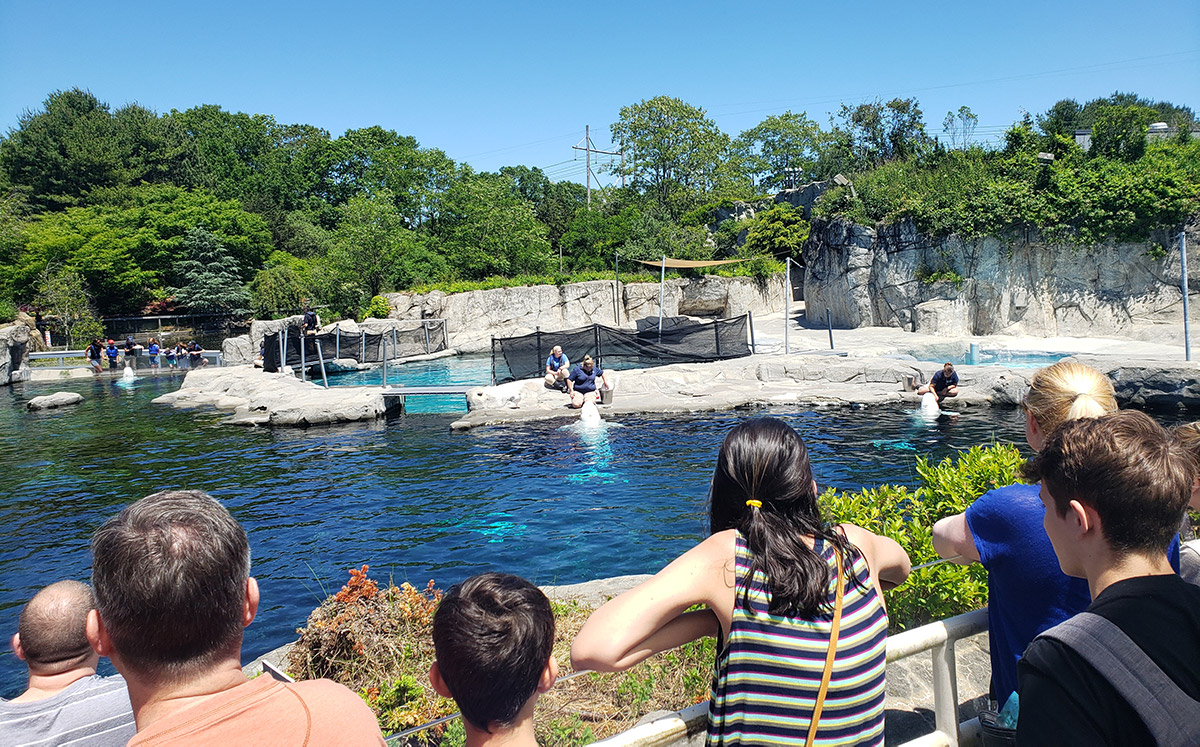 many
performed with 19th century tools. Also on the
property is a fine Mystic
Aquarium that has given a home to
endangered species of fish and penguins, including
New England’s only
beluga whales.
many
performed with 19th century tools. Also on the
property is a fine Mystic
Aquarium that has given a home to
endangered species of fish and penguins, including
New England’s only
beluga whales.
During the summer there is an onboard camp
where children as young as ten years old actually
live, eat and sleep onboard one of the old vessels
where they learn the rudiments of sailing.
It is impossible to underrate the critical
importance of the whaling industry to Mystic and
vice-versa, when the town became wealthy as a
shipbuilder. It was not until the onset of
industrial society that anyone knew the myriad
uses for whale oil—as a revolutionary lubricant,
preservative, lamplighter (better and cheaper than
tallow for candles) and soap, even margarine. So
profitable was whaling that, despite the
unbelievable rigors undergone by the ships’ crews,
who might be out sailing for two years at a time,
the great animal was nearly wiped out, saved
somewhat by the invention of petroleum, which
replaced whale oil by the late 19th century.
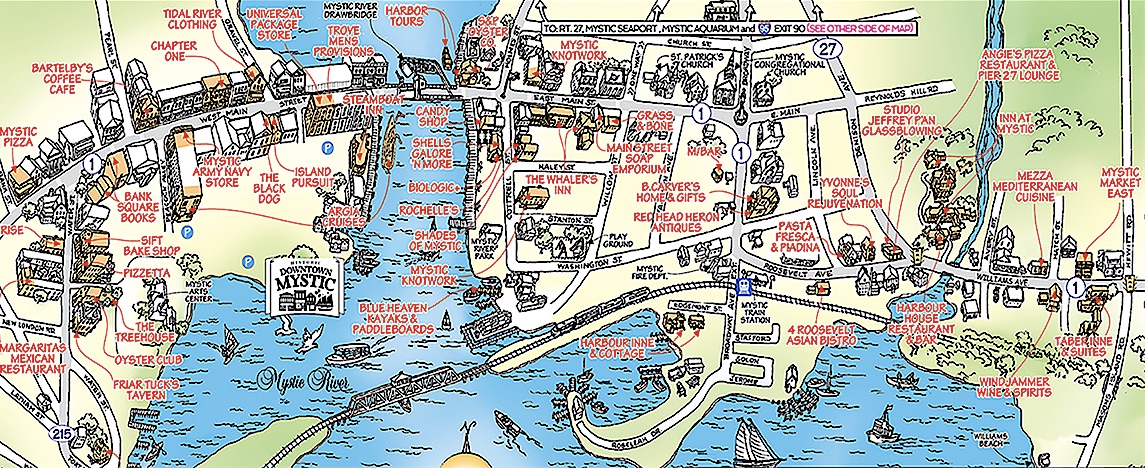 Many
fast-moving masted clipper ships stilled plied the
oceans as commercial merchants, but they, too,
became extinct with the invention of steam powered
ships. The farms around Mystic continued to be
important for the economy, especially at a time in
the 18th century when the average family had nine
children.
Many
fast-moving masted clipper ships stilled plied the
oceans as commercial merchants, but they, too,
became extinct with the invention of steam powered
ships. The farms around Mystic continued to be
important for the economy, especially at a time in
the 18th century when the average family had nine
children.
Now that tourism has become Mystic’s number
one industry, the town officials have assiduously
avoided being overtaken by gentrification, as have
so many towns on Cape Cod, so that Mystic’s old
buildings or various architectural styles remain
true to historic precepts (although the telephone
wires and poles along Main Street are an eyesore). The town also
admirably bans fast food franchises (and I’ll be
reporting on the best places in town to eat next
week).
along Main Street are an eyesore). The town also
admirably bans fast food franchises (and I’ll be
reporting on the best places in town to eat next
week).
There are no large hotels and few
full-fledged inns, including the Inn at
Mystic, set on 14 acres of greenery, outside
of town, and downtown there is the Steamboat
Inn with its own dock, the 1853 Spicer
Mansion, and the Mermaid Inn
B&B. We stayed at the Whaler’s Inn,
just shy of the bridge, with 47 very comfortable
rooms within five separate buildings, with several
recently renovated suites. It’s a very handsome
place, with period detail (though the plastic
siding on the Stonington adjunct is wince making),
and the front desk staff couldn’t be more helpful
or knowledgeable about everything going on in the
region. The lobby offers free coffee, water and
cookies. The bathrooms are completely modern and
well equipped, and the bedrooms equipped with
antique-style phones along with HD TV.
Given the region’s rebound as a
tourist attraction, I highly advise you visit
mid-week, when things are quieter and more
accessible, and I-95 is not such a traumatic
endurance test.
2342 Arthur Avenue
Bronx, NY
718-584-1188
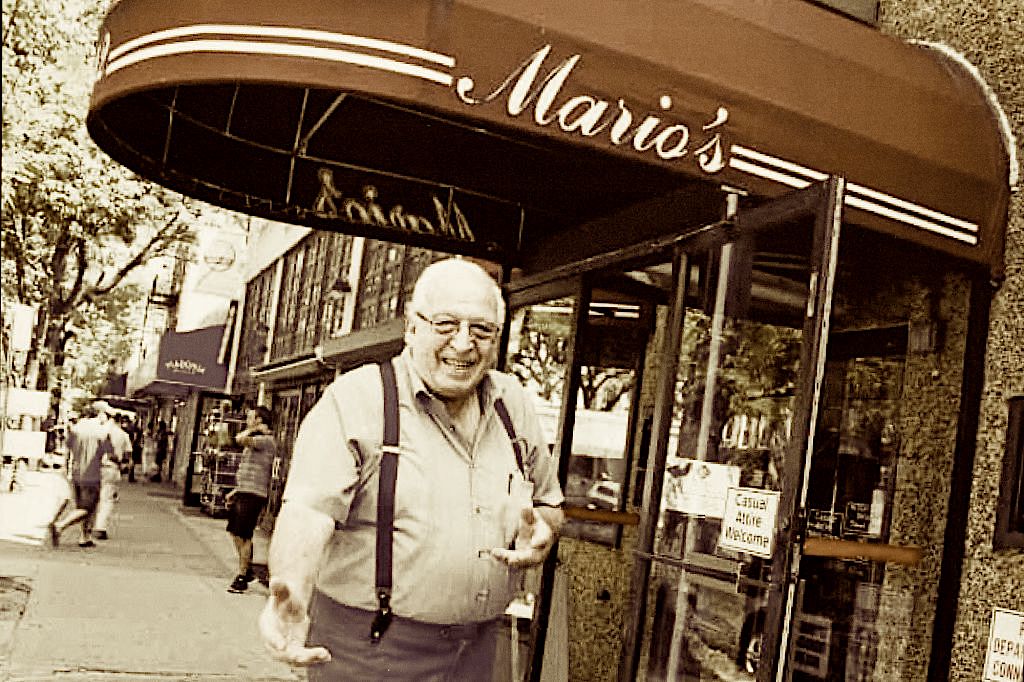
The Belmont section of the north
Bronx, whose main street is Arthur Avenue,
has in recent years achieved a reputation as
much for its Italian-American street culture
as for its food, both in the stores and
restaurants. The allure is its pre-eminence
as America’s most authentic version of
Little Italy, in contrast to the
neighborhood of the same name in lower
Manhattan, which has lost most of its
character and survives solely on tourists.
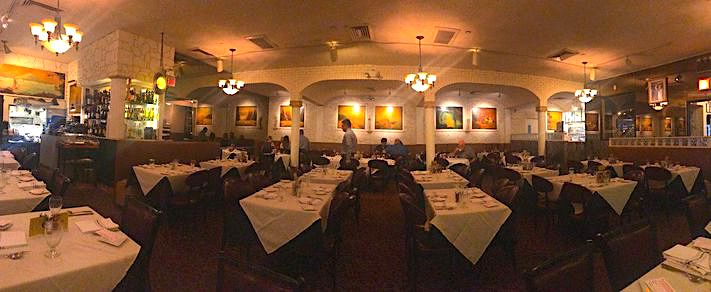 Belmont, on the other hand, is a
thriving community, today with large numbers
of Albanians, Serbians and Montenegrins who
have bought property, restored it and made the
neighborhood shine after a down period in the
1990s. It has always been one of the safest
neighborhoods in all of New York.
Belmont, on the other hand, is a
thriving community, today with large numbers
of Albanians, Serbians and Montenegrins who
have bought property, restored it and made the
neighborhood shine after a down period in the
1990s. It has always been one of the safest
neighborhoods in all of New York.
The food stores—the Italian delis,
Biancardi’s butcher, Borgatti’s noodle shop,
Madonia bakery, Randazzo’s seafood market—all
struggled through the pandemic, but now things
are almost back to normal, and the best
restaurants have been filling up regularly.
Case in point is one of the finest and most
long-lived. Mario’s, opened in 1919 as a
simple pizzeria, became a full-fledged
restaurant, now in its fifth generation of
family owners, currently Regina Miglucci,
whose father Joseph was a 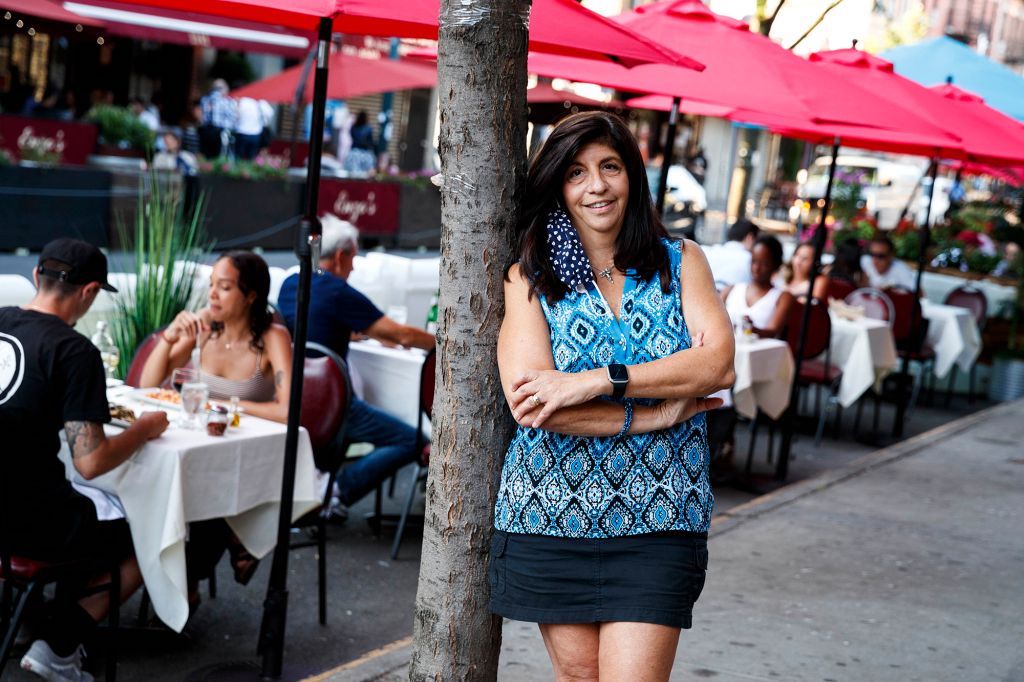 beloved
figure among locals and visitors but who,
sadly, died of Covid last year.
beloved
figure among locals and visitors but who,
sadly, died of Covid last year.
Mario’s has been spruced up but looks
pretty much the same as it has for decades, so
people who haven’t been back in a while will
find it has the same ambiance, the old
varnished murals of Vesuvius, the squishy
banquettes and the white tablecloths and
candles. And, much to my utter joy and relief,
a return visit after months away from Mario’s
revealed that the pizza alla
margherita ($16-$22), which I would put
up against any in New York, is exactly the
same and so delicious as it has been over the
last 103 years. Practice has guaranteed
perfection here.
As at many restaurants, the menu has
been shortened but is appended with specials,
and you still begin with the terrific seeded
Italian bread from Addeo’s Bakery three doors
up the block, butter and a cruet of olive oil
(ask Regina for some of the hot oil). Assorted
cold antipasti ($12.75) is an abundance of
risotto, lettuce, shrimp, salami, anchovies,
vinegar peppers, provolone, fresh mozzarella,
tomato and olives.
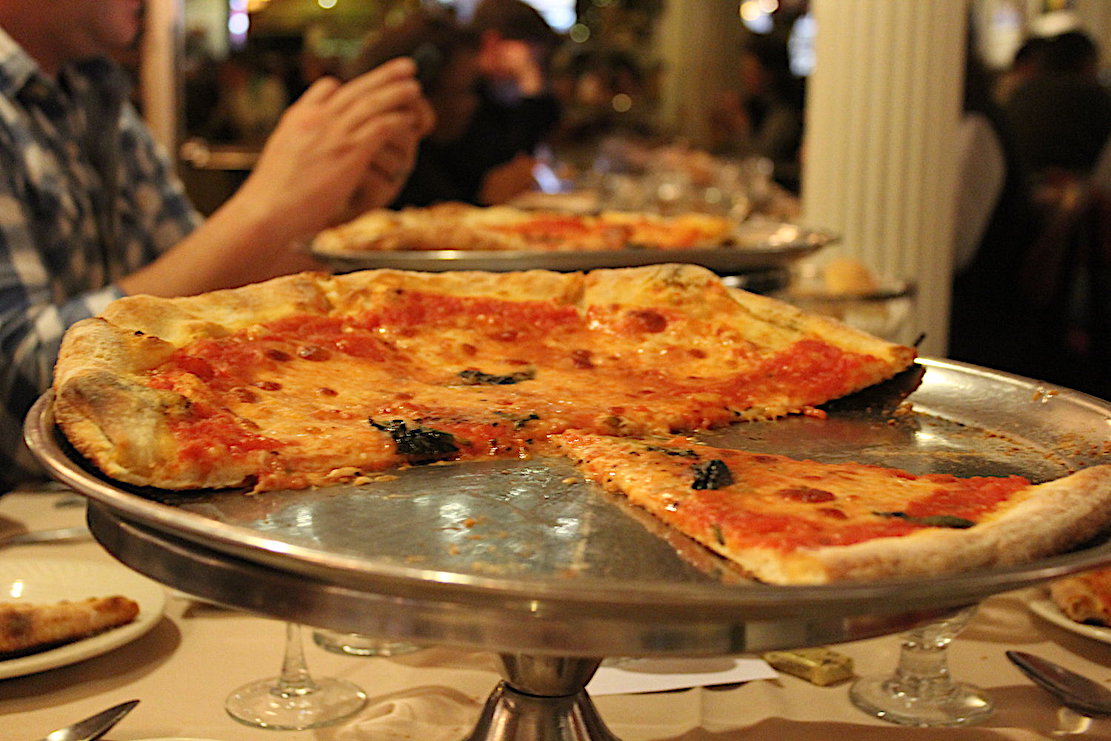 My
favorite starters are the golden brown fried
calamari ($15), and the piping hot spiedini
all romana ($11) of skewered
mozzarella and bread slices in an egg batter,
served with anchovy or tomato sauce in a
portion big enough for two. The escarole in brodo
($8.75) and stracciatella
egg drop soup ($8.75) are based on a
strong chicken stock.
My
favorite starters are the golden brown fried
calamari ($15), and the piping hot spiedini
all romana ($11) of skewered
mozzarella and bread slices in an egg batter,
served with anchovy or tomato sauce in a
portion big enough for two. The escarole in brodo
($8.75) and stracciatella
egg drop soup ($8.75) are based on a
strong chicken stock.
Pastas, many made with fresh noodles
from Borgatti’s around the corner, are
superlative in the best traditions of
Italian-American hospitality, and you have a
wide choice of spaghetti, macaroni and gnocchi
to choose among, along with various sauces
like marinara ($16.75), baked al forno
($18), the fabulous sorrentina
(below) with mozzarella, eggplant
and tomato ($19), with garlic-rich vongole
clams in their shells ($21) and the lasagne
($21) that has become their best seller.
Among the main courses the veal chop is
pounded, breaded and topped with tomato and
mozzarella ($25) or lavished with a Marsala
sauce ($25.50), but the best is done alla
francese ($25.50) with the precise
balance of lemon and white wine to buoy but
not steam the lightly sautéed veal. 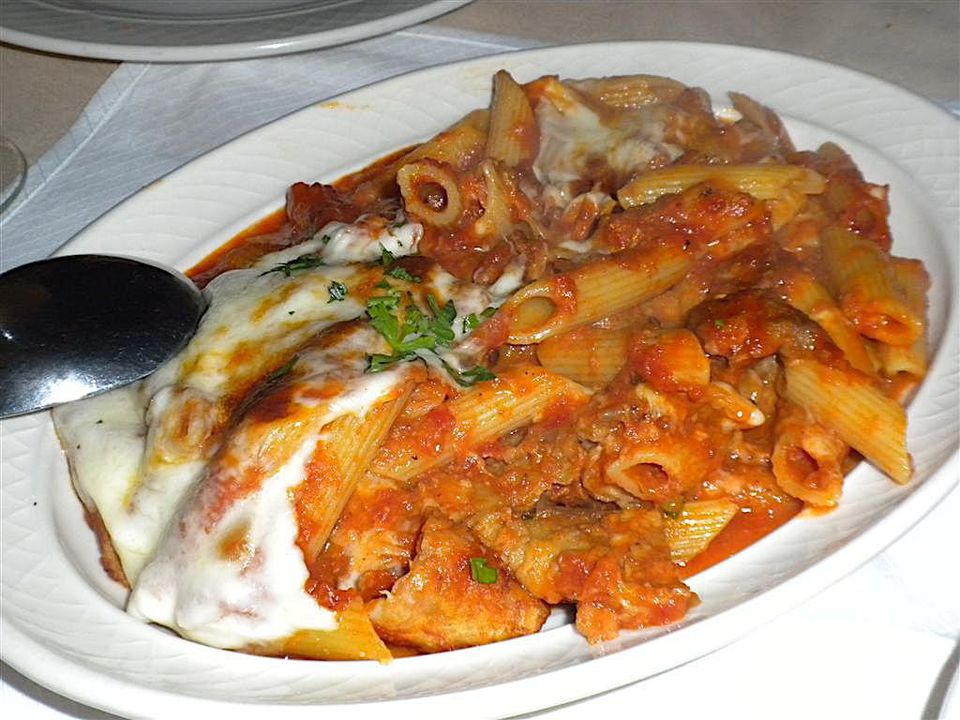 If
you like tripe, you’ll love the Livornese
style with tomato and onions ($26.50). For
seafood, go with a simple fish of the day
(market price) or the very spicy shrimp fra
diaviolo ($25.75). Most dishes come
with an outdated option of spaghetti on the
side, but go for the wonderful breaded potato
croquettes instead.
If
you like tripe, you’ll love the Livornese
style with tomato and onions ($26.50). For
seafood, go with a simple fish of the day
(market price) or the very spicy shrimp fra
diaviolo ($25.75). Most dishes come
with an outdated option of spaghetti on the
side, but go for the wonderful breaded potato
croquettes instead.
Desserts are fairly standard issue, but
Mario’s is one of the few Italian-American
restaurants left that serve biscuit tortoni,
the frozen almond custard topped with a
cherry. And if you like your espresso done to
perfection (corto), by all means have one
and skip the Sambuca.
The wine list is getting an upgrade
with some better bottles, but the ones
currently listed are of average, if decently
priced, quality.
More than at
some other places in Belmont, where the
service can be erratic, at Mario’s it is under
Regina’s guidance as she’s learned from
generations of family, so that everyone gets
the same warm greeting and an affectionate ciao
at meal’s end. You’ll be back. With friends in
tow.
Open Tues.-Sun. for
lunch and dinner
CAPONE’S GOLD
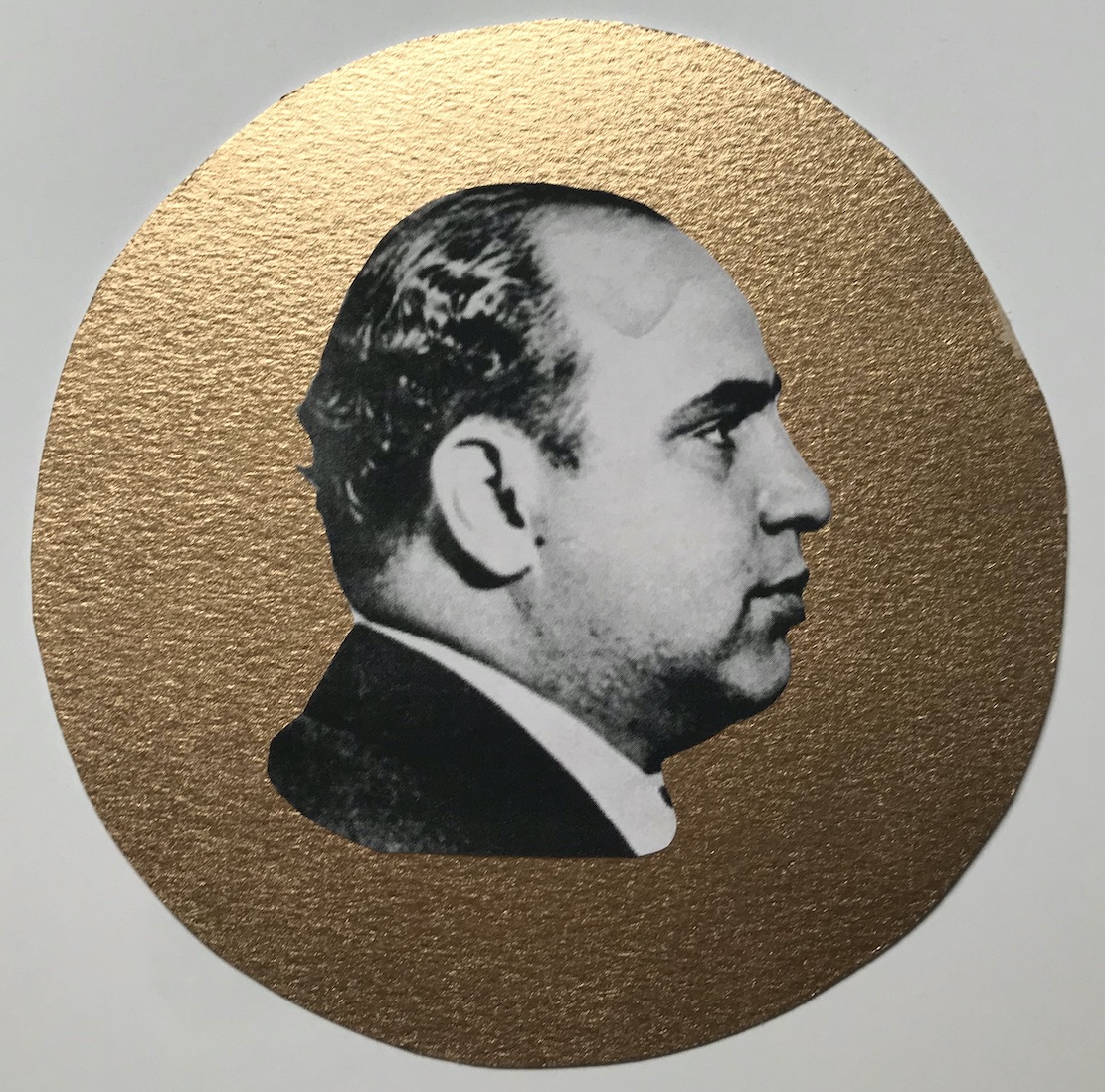
CHAPTER THIRTEEN
David
arrived back at his house on the Hudson and
checked his phone messages, one a few days old
from Katie at Midway airport saying she was on
her way back to New York, one from Brian
Cunningham saying, “David. Call me when you have
a chance.”
David grabbed a pad and pen and dialed
Chicago.
“Hey, Brian, what’s up?”
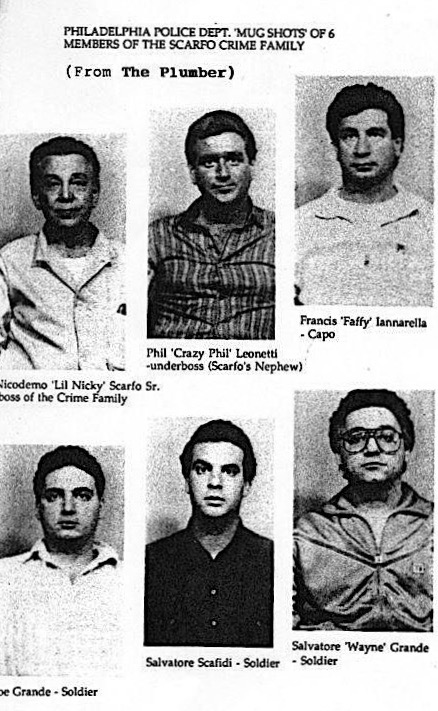 “I’ve got some more info on Frascella.”
“I’ve got some more info on Frascella.”
“Shoot.”
“He has a bit of a colorful history. He
used to be with the police department in
Philadelphia, where he was rated as a pain in the
ass who’d butt his nose into places it didn’t
belong. Tried
twice to get into the rackets division and was
refused both times, even though he insisted he
knew a lot of guys in the Scarfo mob from when he
was a teenager.
Apparently, even worked as a runner for the
Bruno family in Philly, then he got religion and
applied to the police academy.”
“Go on,” David said, writing it all down.
“Says here he seemed a little
over-enthusiastic about infiltrating the Philly
mob. I talked to a guy I know on the force in
Philly who knew him and said he wasn’t a hothead
but he’d get real angry if he wasn’t taken
seriously as a cop.”
“Any evidence he was on the take?” asked
David.
“My friend said penny-ante shit, like most
beat cops. But
he was always boasting he knew this wise guy and
that one, and that he could get on the inside,
which seemed preposterous because the Brunos and
the Scarfos had to know he’d joined the force.”
“So you think he was just an under-talented
go-getter or someone whom the Brunos wanted on the
inside of the police force?”
“I don’t know, Dave. His record was good
enough—or unremarkable enough, no red flags—to get
him a position on the Chicago force, and although
I don’t really know the guy, now that I think
about it, he pretty quickly started talking shit
about his days in Philly, suggesting he would have
been a great informer there, if he’d been allowed
to, but that, since nobody knows him in Chicago,
he’d be perfect for the rackets squad here.”
“Have you spoken to him yet about his being
outside Capone’s house when Katie Cavuto was
there?”
“Yeah, I did.
He said he’s always been interested in mob
history, and when I told him about Katie going out
to Capone’s, he asked me all these questions. Like I
told you, I just said she was doing a story on
Capone’s gold for some magazine and needed help
getting into his house.”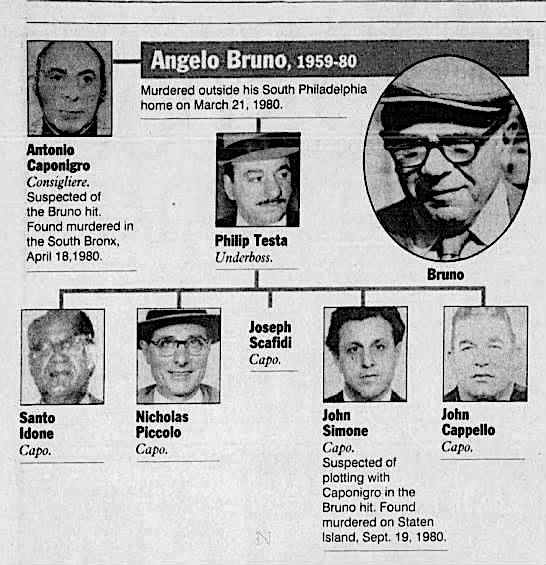
“Did you mention me at all?” asked David.
“Matter of fact, I did. Told him
Katie’s working with a former First Detective in
New York. When
I told him your name, he said, ‘Oh, I know all
about Detective Greco,’ even reeled off some of
your more publicized cases.”
“Really?
Did he say it like he was impressed by me
or just knew about me?”
“You wanna know the truth—I don’t want to
inflate your freakin’ ego more than it already
is—but he said, ‘Greco is the kind of cop I’ve
always wanted to be.’ I said
something nice about you, thank you very much.”
“And what about going out to the Capone
house?”
“He said he had the afternoon off, had
never been out there and thought Katie might need
some help.”
“So why’d he take her picture?” asked
David.
“He said he was just taking a picture of
the house when she walked out.”
“I don’t know, Brian, this smells.”
“I agree, Dave, but for the moment that’s
all I know. I’ll snoop around and keep you
posted.”
“Please do, and thanks a million. And hey,
Brian, can you send me a photo of Frascella?”
“Fax it to you right now.”
David was more curious than ever. It’s one
thing for a young cop to want to be a hero, and
that meant maybe making detective someday. It’s
another thing to take it on himself to be trailing
a reporter to a story. And
David didn’t believe for a second that Frascella
was taking photos of Capone’s house for his
scrapbook.
In
any case, he decided not to raise any alarms with
Katie until he found out more. When he had a
chance, he’d call a friend in the Philadelphia
rackets squad.
*
*
*
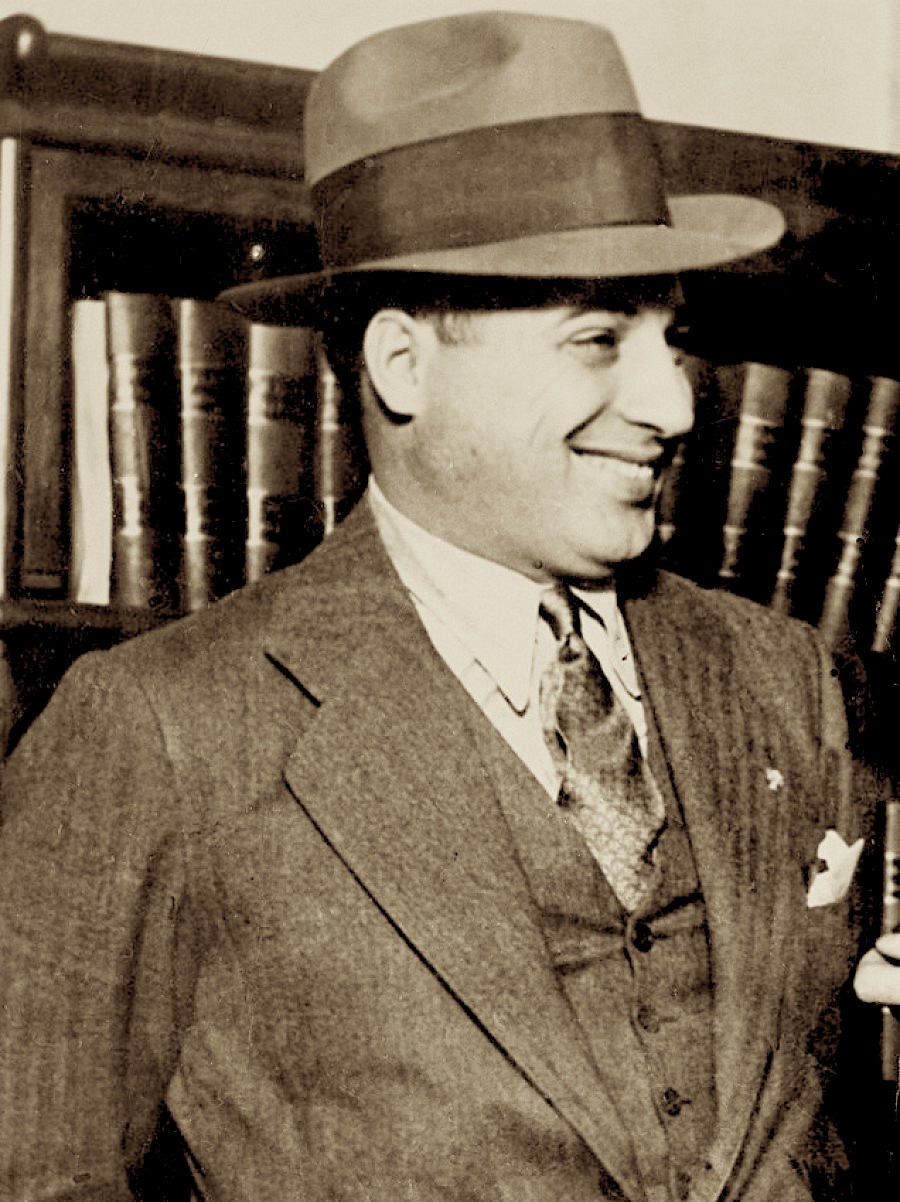 As he had done countless times
before when he was in the preliminary stages of an
investigation, David took a long time just to
think about everything he and Katie had found and
what it might add up to, if anything at all. They had
all the background research done, a couple of good
interviews with “Pants” Cuoco and Alice Britt, and
some of the pieces of the puzzle were fitting
together, but without giving any idea of what the
entire picture looked like.
As he had done countless times
before when he was in the preliminary stages of an
investigation, David took a long time just to
think about everything he and Katie had found and
what it might add up to, if anything at all. They had
all the background research done, a couple of good
interviews with “Pants” Cuoco and Alice Britt, and
some of the pieces of the puzzle were fitting
together, but without giving any idea of what the
entire picture looked like.
The
idea that no one, absolutely no one, had ever
provided credible evidence as to what happened to
Capone’s gold after fifty years made David think
he and Katie were not going to be the ones to find
it. Capone’s
colleagues were mostly dead, as were his friends. Several
of 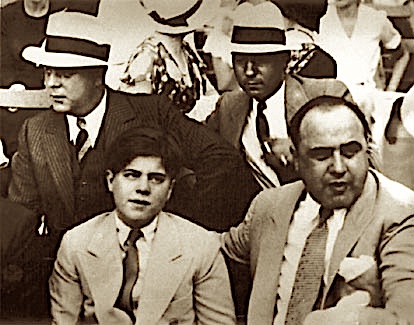 Capone’s children,
grandchildren, nieces, nephews were still alive
but they had tried very hard to rid themselves
entirely of the taint of the Capone name.
Capone’s children,
grandchildren, nieces, nephews were still alive
but they had tried very hard to rid themselves
entirely of the taint of the Capone name.
His
brother Ralph’s son, Ralph Jr. (left), took
the alias Ralph Gabriel, was a wife beater and
killed himself at the age of thirty-three. In
1965, after years of menial jobs, Al’s son Sonny (right)
was arrested for shoplifting $3.50 worth of
groceries and put on two years’ probation. Sonny
begged the judge to let him change his name, which
the judge granted, insisting he keep out of
trouble so that “nothing more would be visited on
the heads of your children.”
None of them, not even Al’s wife of
twenty-nine years, Mae, lived extravagantly after
Al’s death. Mae
sold the mansion on Palm Island for $64,000,
furnishings included; then, after Al’s mother died
in the Chicago house on  South
Prairie, Mae sold that, too, keeping just a few
mementos of her life with Al Capone—some
family silverware and Al’s beloved
collection of objets d’art in the shape of
trumpeting elephants. Apparently,
Al Capone loved elephants (left).
South
Prairie, Mae sold that, too, keeping just a few
mementos of her life with Al Capone—some
family silverware and Al’s beloved
collection of objets d’art in the shape of
trumpeting elephants. Apparently,
Al Capone loved elephants (left).
Years
later Mae (below)and her son Sonny ran a
restaurant called Ted’s Grotto on Miami Beach—she
was cashier—but it failed. Nowhere
close to affluent but not penniless, Mae passed
away in her 101st year on earth. 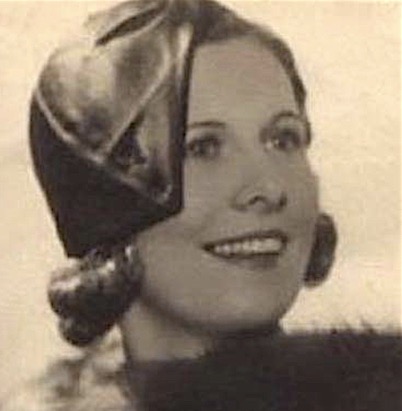
While David was thinking about every aspect
of what he took to calling “the Capone case,”
Katie was booking a flight to Miami. She called
him and told her of her plans.
“I think I ought to see the mansion,” she
said.
David, not wanting to interfere with
Katie’s notions of an investigation, told her,
“Suit yourself.”
“You don’t think I should go?” she asked.
“No, no, go, go,” he replied. “You’re very
good at what you do, digging up stories and
colorful detail."
Katie snapped back, “Yes, I am. And
you’re really good at dialing up your friends on
the phone and using anonymous sources.”
“Katie, that’s how it works for me. I’m not
trying to be condescending. I guess
I just don’t feel we’re getting anywhere fast. The
problem is, I’m used to interviewing people who
are alive, not dead twenty, forty, fifty years
ago.”
“Alice Britt is alive.”
“Barely.”
“Listen, David, I asked you to join me on
this project because of your reputation. I didn’t
ask you to play cub reporter. I’ll
grant you we aren’t very far along putting the
pieces together, but I’m convinced there are more
pieces out there to be found. In any
case, I’m on a noon flight to Miami. I’ll
call you.”
“I’ll be here.”
“And while we’re on the subject, how about
moving into the 1990s and getting yourself a
mobile phone? You’re not that easy to reach.”
“By choice, Katie, by choice. I had
mobile phones when I was on the force, but now
that I’m retired I don’t need further
interruptions in my life.”
David knew that came out sounding terrible,
so he said, “But, okay, I’ll look into it while
you’re gone”—then, saving face—“as long as I can
put it on the expense account.”
“Not a problem.”
There was a lull, then Katie changed the
subject, appealing to David’s strengths.
“By the way, did you hear back from
Cunningham about Frascella?”
“He said he’d call me when he had
something.”
“Good.
And give him your new phone number, eh?”
© John Mariani, 2015
❖❖❖
AN INTERVIEW WITH ANDREA CECCHI
By John Mariani
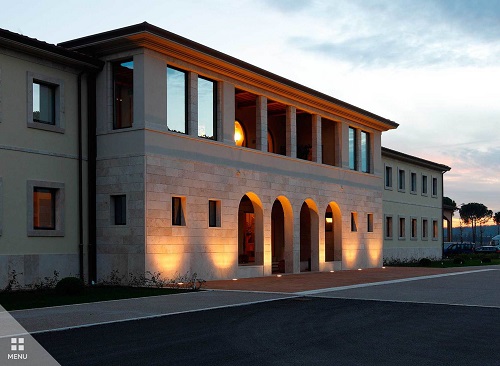
Back
in 1893 Luigi Cecchi founded his Tuscan winery
in the hills of the Chianti Classico region,
which back then had a rather footloose approach
to what a Chianti should be. Cecchi over the
years continued to refine his wines for
consistency and, even then, the sustainability
of the vineyards. In 2018 the third generation
of the family celebrated its 125th
anniversary of Cecchi, so I interviewed the
current head of the family and CEO of the
company, Andrea Cecchi (below), to see
what Chianti Classico is undergoing in 2021.
Their three latest releases that I have tasted
have the virtue of being distinct from one
another but all of the same pedigree.
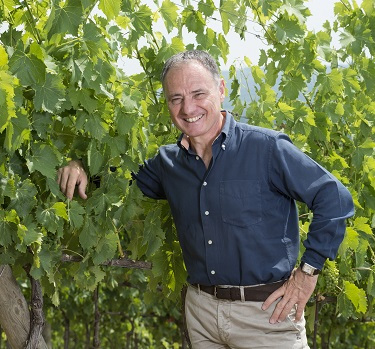 The 2015
Chianti Classico Riserva de Famiglia ($48)
is 90% Sangiovese and 10% Cabernet Sauvignon (once
forbidden in Chianti, now widely used), spending
12 months in oak and at least three months in
bottle, giving the wine a richer body and long
life, still with only 13% alcohol.
The 2015
Chianti Classico Riserva de Famiglia ($48)
is 90% Sangiovese and 10% Cabernet Sauvignon (once
forbidden in Chianti, now widely used), spending
12 months in oak and at least three months in
bottle, giving the wine a richer body and long
life, still with only 13% alcohol.
The 2017 Storia di Famiglia ($27) has
the same grape blend and aging but slightly less
time in bottle age, with 13.5% alcohol and it
shows the excellence of the vintage but can be
drunk with pleasure right now. 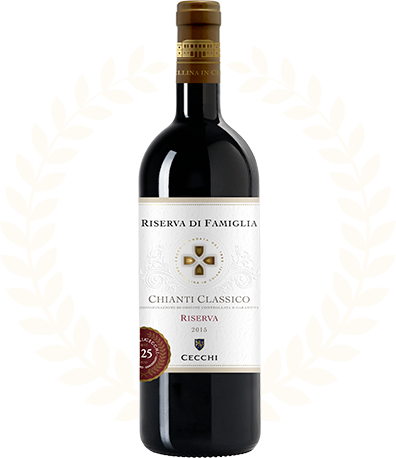
Cecchi’s 2019 Chianti
($21), not a classico but now a DOCG, has 10%
canaiolo instead of Cabernet, and is aged only for
a two-month minimum and has a screwtop closure. It
is meant to be drunk right now and will remind you
of the best non-Classico Chiantis that you drank
with everything from pizza to spaghetti with easy
joy.
Luigi Cecchi had a
side business as a “wine taster.” What did that
mean in terms of tasting others’ wines and
consulting on their making?
Yes, my grandfather,
before funding Cecchi in 1983, was a professional
wine taster working as consultant for other nearby
wine producers. This allowed him to become an
expert wine maker and to better understand the
characteristics of the different Tuscan areas of
production.
The traditions of
Italian winemaking, especially in Chianti, are perhaps
outdated. What aspects do you think are sound
and must be maintained and which are in need of
modern change?
Italian wine laws
are highly restrictive and complex. It is
therefore essential to have a deep knowledge and
understanding for their application in the daily
activity of a winery. However, many of these
regulations are in line with the requirements and
principles of the European Economic Community, and
they are therefore relatively homogeneous among
member states. Such tight relations with the
European Community is unlikely to result in their
modification and revision in the near future.
Nonetheless,
bureaucracy is a major aspect that requires early
intervention as it often restrains daily
management. I believe that most paperwork can be
prepared and organized in a simpler way, still
keeping all the laws and regulations that are
fundamental to protect the appellations, the
patrimony, and more importantly the final
consumers.
Tell me about your
efforts in sustainability? Are they very costly
to implement?
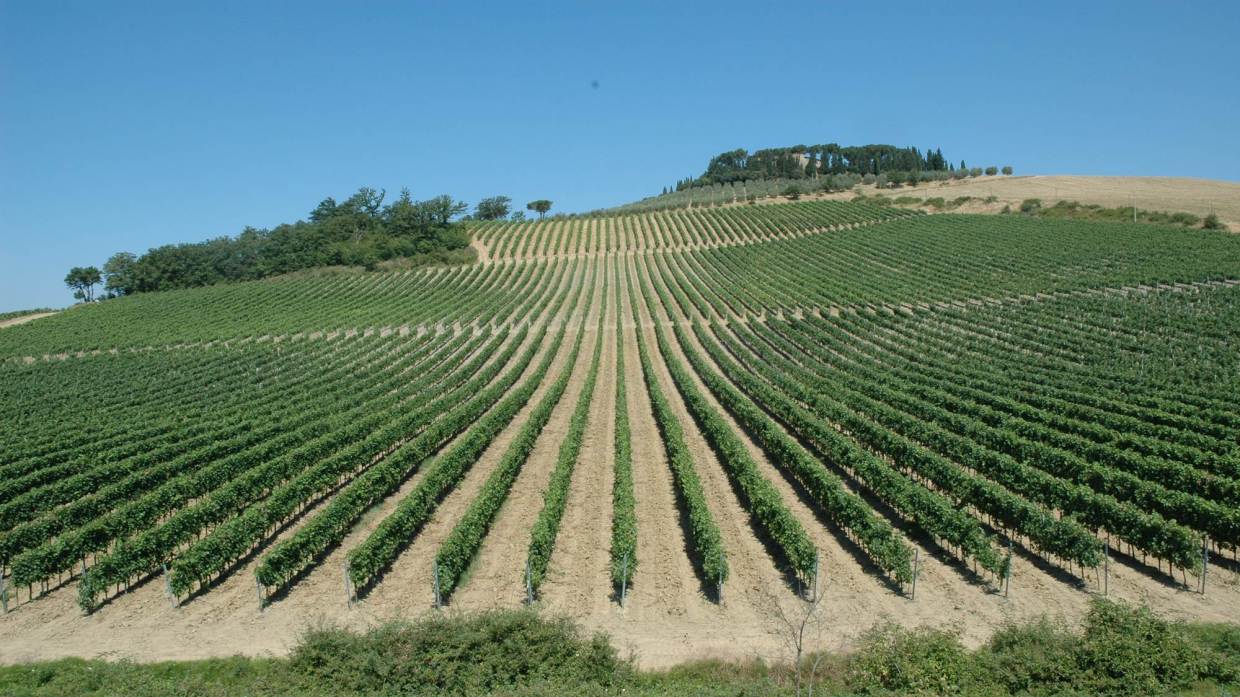 How
do you limit energy consumption?
How
do you limit energy consumption?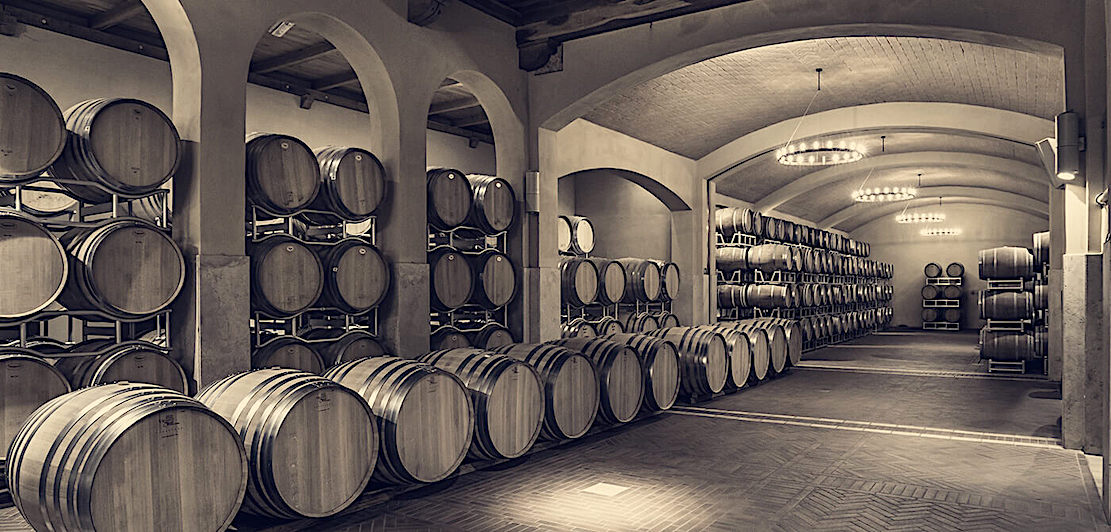 Why has the government
awarded so many DOCGs to wines that are of
negligible quality?
Why has the government
awarded so many DOCGs to wines that are of
negligible quality? 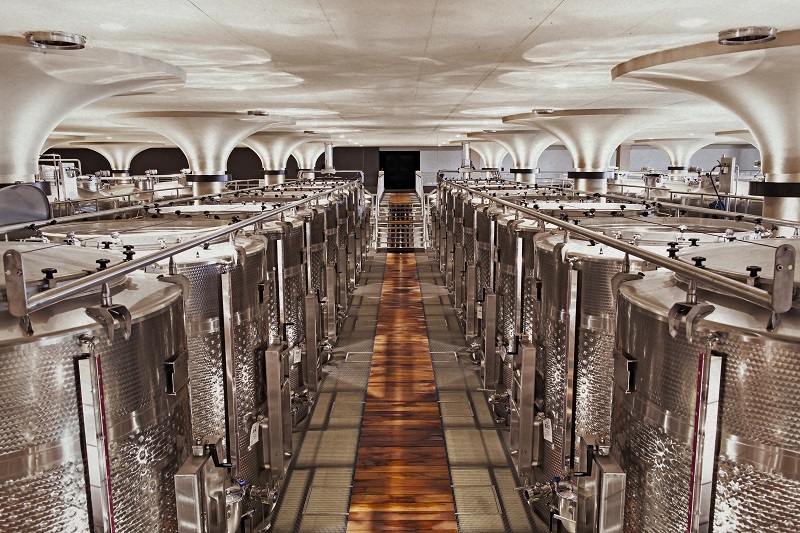 What
differences do you see in the recent three
vintages of your wines (Chianti 2019, Classico
2017, Riserva 2015)?
What
differences do you see in the recent three
vintages of your wines (Chianti 2019, Classico
2017, Riserva 2015)?Italian grape
varieties are characterized by variability in
taste among vintages. This primarily results from
their late ripening when compared to international
grapes. All three vintages, 2019, 2017 and 2015,
however, were characterized by good harvests as
both the weather and the grape quality were
favorable. 2019 was a good vintage as it combines
a well-balanced taste with freshness, resulting in
a characteristic juicy flavor. 2019
wines do not show a strong structure, even though
they may be aged for up to 10 years, especially
for Riserva. Vintage 2017 was characterized by a
reduced production due to a mid-April frost
followed by a drought of the subsequent months.
This resulted in concentrated wine and an average
higher alcohol content. The unfavorable weather
condition of this year resulted in less balanced
wines compared to 2019. 2017 wines can still be
aged, yet for a shorter amount of time compared to
the 2019. 2015 is an excellent vintage with wines
showing perfect balance between the acidity, which
confers freshness, and structure. It is considered
one of the best vintages of the last 20 years and
it is indicated for wine aging for up to 15 years.
Do you think screwtops
will replace corks in the future of Cecchi ?
I don’t think we
will replace corks in the future at our winery.
Despite being a very reliable sealing method and
being used for a number of our wines, I believe it
will never replace natural cork. We are
currently using screwtops for some IGT and DOCG
wines such as Sangiovese, Chianti and Vernaccia di
San Gimignano. Current regulations of the Chianti
Classico limit the use of screwtops in this
appellation, where traditional sealing methods are
indicated. I generally prefer screwtops for
simpler and young wines.
Should a reserva be kept for
a few years for maximum maturity?
The philosophy of
our company is to provide wines that are ready for
consumption and that show a great complexity and
sharpness. Sangiovese in Tuscany represents the
most prevalent wine grape and it dominates most of
the appellation we produce. Before selling,
Riserva wines are refined in wood first and then
in bottles for at least 1 year. Nonetheless, even
after selling, wines continue their refinement in
the bottle for few years, where the natural
maturation results in a greater delicacy and
complexity. I personally appreciate a good Riserva
after 5 years from the Vintage.
❖❖❖
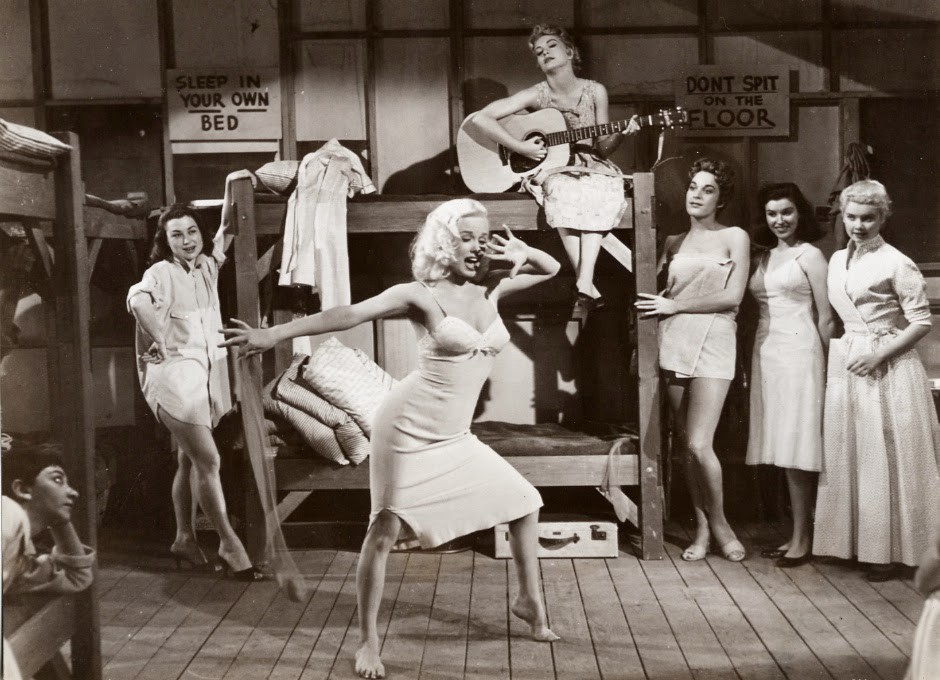
LA DOLCE
VITA
At the women's prison in San Vittore, Milan,
they have regularly scheduled twice-weekly Happy
Happy Hours including guests.
❖❖❖
Sponsored by

Any of John Mariani's books below may be ordered from amazon.com.
 The Hound in Heaven
(21st Century Lion Books) is a novella, and
for anyone who loves dogs, Christmas, romance,
inspiration, even the supernatural, I hope you'll find
this to be a treasured favorite. The story
concerns how, after a New England teacher, his wife and
their two daughters adopt a stray puppy found in their
barn in northern Maine, their lives seem full of promise.
But when tragedy strikes, their wonderful dog Lazarus and
the spirit of Christmas are the only things that may bring
his master back from the edge of despair.
The Hound in Heaven
(21st Century Lion Books) is a novella, and
for anyone who loves dogs, Christmas, romance,
inspiration, even the supernatural, I hope you'll find
this to be a treasured favorite. The story
concerns how, after a New England teacher, his wife and
their two daughters adopt a stray puppy found in their
barn in northern Maine, their lives seem full of promise.
But when tragedy strikes, their wonderful dog Lazarus and
the spirit of Christmas are the only things that may bring
his master back from the edge of despair. WATCH THE VIDEO!
“What a huge surprise turn this story took! I was completely stunned! I truly enjoyed this book and its message.” – Actress Ali MacGraw
“He had me at Page One. The amount of heart, human insight, soul searching, and deft literary strength that John Mariani pours into this airtight novella is vertigo-inducing. Perhaps ‘wow’ would be the best comment.” – James Dalessandro, author of Bohemian Heart and 1906.
“John Mariani’s Hound in Heaven starts with a well-painted portrayal of an American family, along with the requisite dog. A surprise event flips the action of the novel and captures us for a voyage leading to a hopeful and heart-warming message. A page turning, one sitting read, it’s the perfect antidote for the winter and promotion of holiday celebration.” – Ann Pearlman, author of The Christmas Cookie Club and A Gift for my Sister.
“John Mariani’s concise, achingly beautiful novella pulls a literary rabbit out of a hat – a mash-up of the cosmic and the intimate, the tragic and the heart-warming – a Christmas tale for all ages, and all faiths. Read it to your children, read it to yourself… but read it. Early and often. Highly recommended.” – Jay Bonansinga, New York Times bestselling author of Pinkerton’s War, The Sinking of The Eastland, and The Walking Dead: The Road To Woodbury.
“Amazing things happen when you open your heart to an animal. The Hound in Heaven delivers a powerful story of healing that is forged in the spiritual relationship between a man and his best friend. The book brings a message of hope that can enrich our images of family, love, and loss.” – Dr. Barbara Royal, author of The Royal Treatment.
 |
The Encyclopedia of American Food and Drink by John F. Mariani (Bloomsbury USA, $35) Modesty forbids me to praise my own new book, but let me proudly say that it is an extensive revision of the 4th edition that appeared more than a decade ago, before locavores, molecular cuisine, modernist cuisine, the Food Network and so much more, now included. Word origins have been completely updated, as have per capita consumption and production stats. Most important, for the first time since publication in the 1980s, the book includes more than 100 biographies of Americans who have changed the way we cook, eat and drink -- from Fannie Farmer and Julia Child to Robert Mondavi and Thomas Keller. "This book is amazing! It has entries for everything from `abalone' to `zwieback,' plus more than 500 recipes for classic American dishes and drinks."--Devra First, The Boston Globe. "Much needed in any kitchen library."--Bon Appetit. |
"Eating Italian will never be the same after reading John Mariani's entertaining and savory gastronomical history of the cuisine of Italy and how it won over appetites worldwide. . . . This book is such a tasteful narrative that it will literally make you hungry for Italian food and arouse your appetite for gastronomical history."--Don Oldenburg, USA Today. "Italian
restaurants--some good, some glitzy--far
outnumber their French rivals. Many of
these establishments are zestfully described
in How Italian Food Conquered the World, an
entertaining and fact-filled chronicle by
food-and-wine correspondent John F.
Mariani."--Aram Bakshian Jr., Wall Street
Journal.
"Equal parts
history, sociology, gastronomy, and just
plain fun, How Italian Food Conquered the
World tells the captivating and delicious
story of the (let's face it) everybody's
favorite cuisine with clarity, verve and
more than one surprise."--Colman Andrews,
editorial director of The Daily
Meal.com. "A fantastic and fascinating
read, covering everything from the influence
of Venice's spice trade to the impact of
Italian immigrants in America and the
evolution of alta cucina. This book will
serve as a terrific resource to anyone
interested in the real story of Italian
food."--Mary Ann Esposito, host of PBS-TV's
Ciao
Italia. "John Mariani has written the
definitive history of how Italians won their
way into our hearts, minds, and
stomachs. It's a story of pleasure over
pomp and taste over technique."--Danny Meyer,
owner of NYC restaurants Union Square
Cafe, The Modern, and Maialino.
|
 |
 |
 |
 |
 |
 |
 Everett Potter's Travel Report:
Everett Potter's Travel Report: 
 Eating Las
Vegas JOHN CURTAS has been covering
the Las Vegas food and restaurant scene
since 1995. He is the co-author of EATING LAS
VEGAS – The 50 Essential Restaurants (as
well as the author of the Eating Las
Vegas web site: www.eatinglasvegas.
He can also be seen every Friday morning as
the “resident foodie” for Wake Up With the
Wagners on KSNV TV (NBC) Channel 3 in
Las Vegas.
Eating Las
Vegas JOHN CURTAS has been covering
the Las Vegas food and restaurant scene
since 1995. He is the co-author of EATING LAS
VEGAS – The 50 Essential Restaurants (as
well as the author of the Eating Las
Vegas web site: www.eatinglasvegas.
He can also be seen every Friday morning as
the “resident foodie” for Wake Up With the
Wagners on KSNV TV (NBC) Channel 3 in
Las Vegas.
MARIANI'S VIRTUAL GOURMET
NEWSLETTER is published weekly. Publisher: John Mariani. Editor: Walter Bagley. Contributing Writers: Christopher Mariani,
Robert Mariani, Misha Mariani, John A. Curtas, Gerry Dawes, Geoff Kalish,
and Brian Freedman. Contributing
Photographer: Galina Dargery. Technical
Advisor: Gerry
McLoughlin.
If you wish to subscribe to this
newsletter, please click here: http://www.johnmariani.com/subscribe/index.html
© copyright John Mariani 2021
